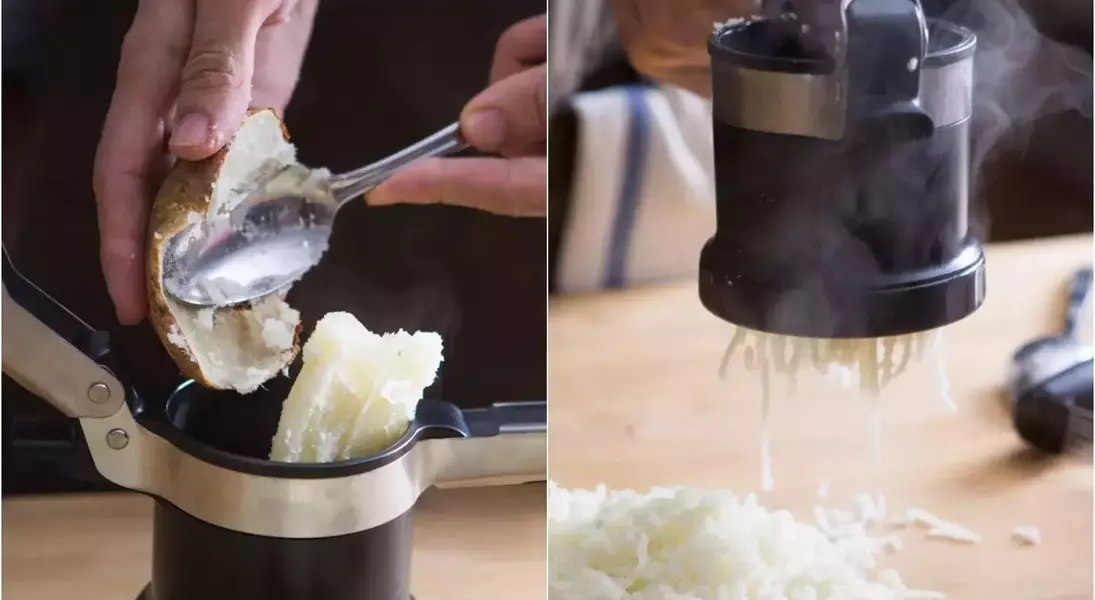





Unlocking the Potential of Potatoes: From Fluffy Clouds to Velvety Delights
The Foundation of Fluffy Mash: Why Russets Reign Supreme
Not all tubers are created equal when it comes to crafting the perfect mashed potato dish. For those seeking an exceptionally light and airy texture, akin to fluffy clouds, specific potato varieties are paramount. Among them, high-starch, low-moisture types such as Russets stand out as the ideal choice. The secret lies in their mealy composition, which allows them to disintegrate easily upon cooking. This characteristic minimizes the effort required to break them down, thus reducing the release of excess starch. While starch is a component of potatoes, too much of it can lead to a gluey, undesirable texture. Russets enable a swift rinsing of any released starch before incorporating dairy, leading to a lighter outcome.
The Science Behind the Softness: How Russets Create an Airy Texture
The creation of fluffy mashed potatoes is an art that involves delicate handling of potato particles. When cooked Russets are gently broken down, they form fine individual pieces that readily absorb fats and liquids, typically butter and milk or cream. This rapid absorption means less manipulation is needed to achieve the desired consistency. Excessive mashing, regardless of potato type, can over-activate starches, resulting in a sticky product. Russets' inherent structure and their ability to quickly take in dairy with minimal mixing are key to their success in producing a light and ethereal mash.
The Golden Standard for Creamy Purées: Embracing Yukon Golds
When the culinary aspiration leans towards a luxurious, velvety mashed potato, reminiscent of classic French preparations like pommes purées, a different potato variety steps into the spotlight: the waxy Yukon Gold. These potatoes, with their denser texture, demand more vigorous processing to break down, which in turn encourages a greater release of gelatinized starch. This starch is not an adversary here; rather, it acts as a crucial binder, especially in recipes featuring a high fat-to-potato ratio, preventing separation and contributing to the dish's decadent smoothness. The natural properties of Yukon Golds are essential for achieving that desirable, silken mouthfeel.
Crafting Velvety Smoothness: The Role of Yukon Golds and Specialized Tools
Creating a truly rich and creamy potato purée with Yukon Golds involves specific techniques to harness their unique qualities. After cooking, these potatoes benefit from being processed through a food mill or a ricer. These non-motorized tools are perfect for breaking down the potatoes without over-processing them, which could lead to a less refined texture. Following this, the potatoes are vigorously whipped with melted butter and heavy cream. For the ultimate in smoothness, passing the entire mixture through a fine-mesh strainer ensures every lump is eliminated, resulting in a purée that is both indulgent and exquisitely silken. The added starch from Yukon Golds effectively emulsifies the generous amounts of fat, creating a stable and luscious dish.
The Tools of the Trade: Essential Equipment for Perfect Mashed Potatoes
Regardless of whether you are aiming for fluffy or creamy mashed potatoes, the method of breaking down cooked potatoes is critical. Traditional blenders or food processors are generally ill-suited for this task, as their high-speed blades can over-process the potatoes, releasing excessive starch and transforming them into an unappetizing, glue-like paste. Instead, specialized manual tools like a potato ricer or a food mill are highly recommended. These implements efficiently process potatoes with minimal shearing action, preserving the desired texture.
Potato Ricers: Small but Mighty Kitchen Companions
A potato ricer, while seemingly a single-purpose kitchen gadget, proves invaluable for mashed potato enthusiasts. Its compact design allows for efficient processing of small batches of potatoes, quickly transforming them into fine, uniform strands. This minimizes the risk of overworking the potatoes and activating too much starch. The ricer's ease of use and modest footprint make it a worthwhile investment for anyone who enjoys making mashed potatoes on a regular basis, delivering consistently excellent results without fuss.
Food Mills: Versatility and Efficiency for Larger Batches
For those tackling larger quantities of potatoes or seeking a more versatile tool, a food mill is an excellent option. While it occupies more counter space than a ricer, its larger capacity allows for quicker processing of substantial amounts of cooked potatoes. Beyond potatoes, a food mill excels at preparing a variety of ingredients, such as tomato passata or fresh sauces, making it a multi-functional addition to any kitchen. Although cleaning and assembly might be slightly more involved than with a ricer, the efficiency and broad utility of a food mill can justify its presence, especially for passionate home cooks.
Avoiding the Pitfalls: Why Manual Mashers Fall Short
While various tools exist for mashing potatoes, not all are created equal. Manual potato mashers, which require significant force and can produce an inconsistent texture, are generally not recommended for achieving either fluffy or creamy mashed potatoes. Unless a deliberately chunky, rustic style of potato is desired, these tools risk overworking the potatoes and failing to deliver a uniform consistency. Their utility is better applied to tasks like breaking down ground meat, where an even, fine texture is less critical than with mashed potatoe
